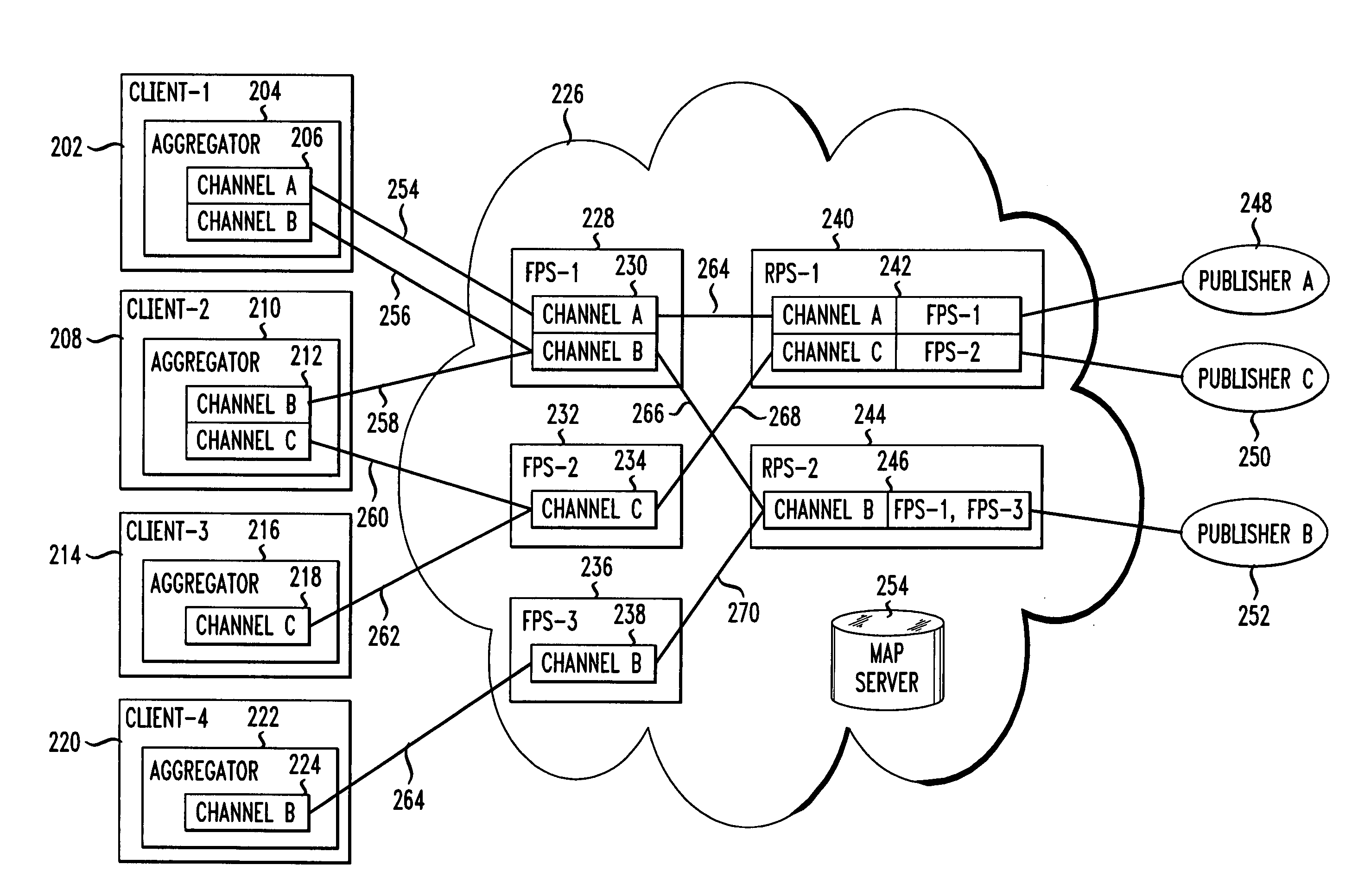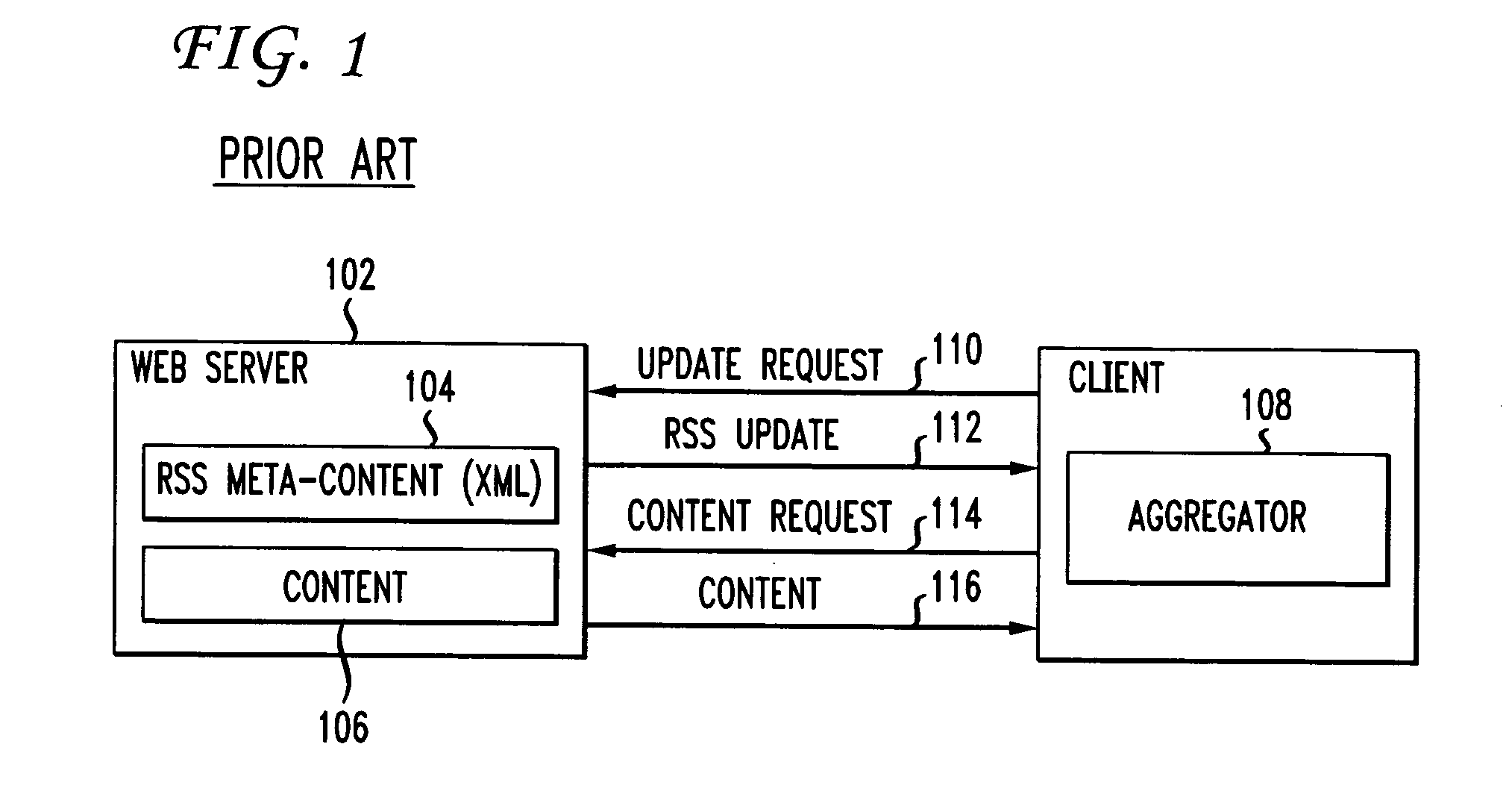Data network information distribution
a technology of data network and information distribution, applied in the field of data network, can solve the problems of users not knowing when to transmit a request to the website for updated content, users sending too many unnecessary requests, and users not knowing when to update content or information at the websi
- Summary
- Abstract
- Description
- Claims
- Application Information
AI Technical Summary
Benefits of technology
Problems solved by technology
Method used
Image
Examples
Embodiment Construction
[0016]FIG. 2 shows a general network architecture in accordance with an embodiment of the present invention. Four clients (Client-1202, Client-2208, Client-3214, Client-4220) are shown, each running an aggregator (e.g., an RSS aggregator) application program 204, 210, 216, 222 respectively. The clients may be any type of device capable of executing an aggregator application program and capable of communicating via a network. For example, a client may be a general purpose computer executing an aggregator as an application program, as is well known in the art. This client may connect to the network 226 via any one of the various known connection technologies, such as modem dial-up, cable modem, DSL, Wi-Fi, local area network, etc. A client may also be, for example, a wireless telephone executing an aggregator application and capable of network communication via a wireless network. One skilled in the art will recognize that there are various other devices which are capable of executing...
PUM
 Login to View More
Login to View More Abstract
Description
Claims
Application Information
 Login to View More
Login to View More - R&D
- Intellectual Property
- Life Sciences
- Materials
- Tech Scout
- Unparalleled Data Quality
- Higher Quality Content
- 60% Fewer Hallucinations
Browse by: Latest US Patents, China's latest patents, Technical Efficacy Thesaurus, Application Domain, Technology Topic, Popular Technical Reports.
© 2025 PatSnap. All rights reserved.Legal|Privacy policy|Modern Slavery Act Transparency Statement|Sitemap|About US| Contact US: help@patsnap.com



